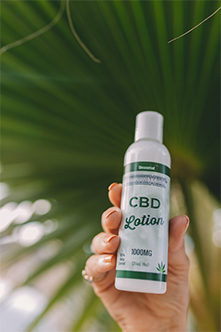Welcome to the world of weed! For decades, marijuana has been a controversial topic, with many people associating it with stigma and criminality. However, the tide has turned without any doubt in recent years, and marijuana is becoming increasingly accepted and legalized worldwide. With this change comes a growing curiosity about this plant and its effects. For those new to the world of weed, it can be challenging to navigate the different strains, modes of consumption, and legal regulations that vary from place to place. This is where our comprehensive guide comes in. In this article, we will talk about weed, exploring its history and cultural significance, its effects on the mind and Body, and the current legal landscape. Whether you’re a seasoned consumer or a curious beginner, this guide will provide a wealth of information and insights to help you experience high life safely, responsibly, and confidently. So, please sit back, relax, and explore this fascinating topic together.
The History of Weed
Marijuana has been used for medicinal, spiritual, and recreational purposes for centuries. The earliest recorded use of the plant dates back to ancient China, where Marijuana was used for its medicinal properties. The Chinese used marijuana to treat various health problems, from pain and inflammation to digestive issues and anxiety. From China, marijuana spread to other parts of Asia, the Middle East, and eventually to Europe.
In the United States, marijuana was used for medicinal purposes in the 19th century. It was commonly prescribed for pain relief, nausea, and other symptoms of various illnesses. However, with the rise of the temperance movement in the early 20th century, marijuana became increasingly associated with moral decay and criminality. This led to the passage of the Marihuana Tax Act in 1937, which effectively criminalized marijuana at the federal level.
Despite the federal prohibition, marijuana continued to be recreationally and medicinally throughout the 20th century. In the last years, a shift in attitudes toward marijuana has occurred, with many states legalizing it for both medicinal and recreational use. Today, marijuana is one of the fastest-growing industries in the United States, with billions of dollars in revenue generated each year.
The Science Behind Weed – How it Works in the Body
Marijuana contains over 100 different chemical compounds commonly known as cannabinoids. The two most well-known are tetrahydrocannabinol (THC) and cannabidiol (CBD). THC is the primary psychoactive compound, it is responsible for the “high” users experience. CBD, however, is not psychoactive and is believed to have medicinal properties.
When marijuana is consumed by smoking, vaping, or eating, the cannabinoids enter the bloodstream and travel to the brain. THC binds to specific brain receptors, known as CB1 receptors, which regulate mood, appetite, and other bodily functions. In addition, this binding directs to the release of dopamine, whis is a neurotransmitter associated with pleasure and reward.
Conversely, CBD does not bind to CB1 receptors in the same way as THC. Instead, it interacts with other body receptors, such as serotonin and vanilloid, which are involved in pain, inflammation, and mood regulation. As a result, CBD is believed to have anti-inflammatory, analgesic, and anxiolytic properties, among others.
Effects of Weed – Short-term and Long-term
The effects of weed can vary depending on the strain, dose, method of consumption, and individual factors such as age, gender, and body weight. In the short-term, marijuana use can lead to euphoria, relaxation, and/or altered perception of time and space. However, it can also cause dry mouth, red eyes, and increased appetite, commonly called “the munchies.”
Weed Strains and Their Effects
Marijuana strains can be broadly classified into two categories: indica and sativa. Indica strains are especially known for their relaxing and soothing effects, while sativa songs are more energizing and uplifting. Hybrid strains, a combination of indica and sativa, can have different results depending on the specific strain and ratio of the two types.
In addition to the indica vs. sativa classification, marijuana strains can be categorized based on their cannabinoid profile. Some strains are high in THC and low in CBD, while others are high in CBD and low in THC. The THC-to-CBD ratio can significantly impact the strain’s effects, with high-THC strains being more psychoactive and high-CBD strains being more medicinal.

Methods of Consumption – Smoking, Edibles, Oils, etc.
Marijuana can be consumed in various ways, each with its own advantages and disadvantages. The most traditional method of consumption is smoking, either through a joint, pipe, or bong. Smoking allows for quick onset and easy dosing, but it can also harm the lungs and produce a strong odor.
Edibles, such as brownies, gummies, and chocolates, are another popular consumption method. Edibles take longer to take effect, usually between 30 minutes to an hour, but can produce a more intense and longer-lasting high. However, edibles can be really hard to dose accurately, leading to overconsumption, which can be unpleasant or even dangerous.
Other consumption methods include vaping, which involves heating the marijuana to a temperature that produces vapor but not smoke, and oils and tinctures, which are concentrated forms of marijuana that can be added to your food and/or drinks or taken sublingually.
The Legality of Weed – State and Federal Laws
The legality of marijuana varies from one state to another in the United States, with some states allowing both medicinal and recreational use. In contrast, others only allow therapeutic use or prohibit marijuana altogether. At the federal level, marijuana is classified as a Schedule I drug, so it is not accepted for medical use and a has high potential for abuse.
This discrepancy between state and federal laws has created a complicated legal landscape for marijuana businesses and consumers. Marijuana businesses often cannot access banking services or take advantage of tax deductions. At the same time, consumers must navigate a patchwork of laws and regulations that can vary widely from one state to another.
Medical Marijuana – Benefits and Legality
Medical marijuana is the use of marijuana for medicinal purposes, such as pain relief, nausea and vomiting, and muscle spasms. In many states, medical marijuana is legal for patients with qualifying medical conditions, although the specific needs and requirements for certification vary from one state to another.
The use of medical marijuana have several benefits, including reducing pain as well as inflammation, improving sleep, and reducing the side effects of chemotherapy. However, the research on the efficacy of medical marijuana is still limited, and more studies need to be made to fully understand its potential benefits and risks.

How to Buy Weed – Dispensaries, Online, etc.
In states where marijuana is legal, consumers can purchase it from licensed dispensaries. Dispensaries offer a range of products, including flowers, edibles, oils, and other forms of marijuana. They are typically staffed by knowledgeable professionals who can help consumers choose the right product for their needs.
In some states, consumers can also purchase marijuana online from licensed retailers. Online sales are typically subject to the same regulations as in-person sales but can offer greater convenience and privacy.
Weed Culture and Community
Marijuana has a rich and diverse music, art, and fashion culture. The marijuana community is also known for its activism and advocacy, working to reform marijuana laws and promote education and awareness about the plant.
The marijuana community is also known for its inclusivity and diversity, welcoming people of all backgrounds and identities. This sense of community and belonging has been a significant part of the appeal of marijuana for many people.
Tips for Responsible Weed Use
Whether you’re a seasoned consumer or a curious beginner, it’s essential to use marijuana responsibly. This means understanding the risks and benefits of marijuana, dosing carefully, and avoiding driving or operating heavy machinery while under the influence.
If you’re new to marijuana, starting with a low dose and going slow to avoid overconsumption or unpleasant side effects is essential. It’s also important to be aware of your state’s legal landscape and follow all applicable laws and regulations. Gentleman Toker DC weed can be a great help if you need a reliable source of cannabis/weed reviews.

